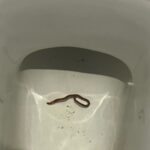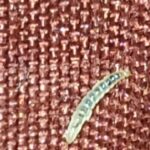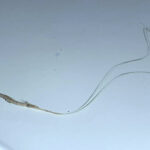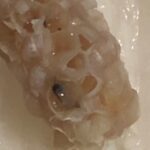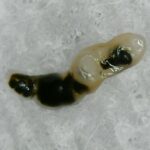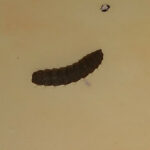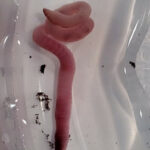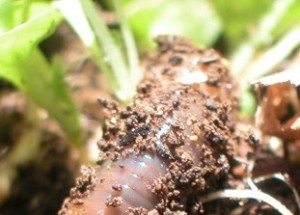Earthworms are the most important creatures on earth. They play an important part in fertilizing the soil and they also help with oxygen and water flow into the soil. Earthworms excrete tons of castings (excrement) each year, which is a powerful fertilizer. Just think, 25 earthworms per square foot of soil equal 1 million earthworms per acre. In healthy soil, 40 tons of castings per acre pass through earthworms’ bodies daily. A new U.S. study suggests that there are 1.5 million worms per acre, which move 20 tons of earth each year.
Earthworms also burrow into the soil creating passageways for oxygen and water. Because earthworms are so important to the survival of the earth’s plants, trees, and crops, when trying to get rid of destructive creatures such as grubs, you must take special care not to harm the earthworms. There are several ways to accomplish this.
Before we discuss how to get rid of grub worms without killing earthworms, it is important to understand the lifestyle of the grub worm. Grub worms feed on plants and the roots of turf grasses and the adult beetles feed on trees, shrubs, and other foliage. While grub worms are harmless to humans, they can be devastating to crops mainly because they feed on crop roots. Grub worms have three larval stages, with the third being the most devastating to crops. They hatch from eggs laid in soil and they also pupate in the soil. Fortunately, the adults are not considered turf pests.
Its easy to tell whether you have a grub worm infestation or not by the condition of your grass and the types of animals foraging around in your lawn or in your crops. When grub worms feed on grass roots, the grass turns yellow and dies. You will notice scattered brown patches of grass and the grass will pull up very easily. If you notice an increase in birds, moles, raccoons, and depending on what part of the country you live in, armadillos, this may be because you have a white grub infestation. If you notice wasps in large numbers hovering over your grass, this may also be a sign of a white grub infestation.
Before attempting to get rid of grub worms, you can confirm that you have an infestation by digging up the top three to four inches of soil, roots, and thatch. Simply sift through the materials and look for the larvae. If you find them—its time to explore treatment options.
One way to get rid of grub worms is by letting nature take its course. Do not treat your garden or lawn with chemicals that will kill natural enemies such as ants, ground beetles, scoliids, and tiphiids. These natural predators may help control the problem. Next, you can keep the area moist enough to keep the earthworms alive, but dry enough to repel grub worms. Grub worms prefer wet areas, while earthworms prefer “moist” soil.
You can also use a number of preventative measures on the tops of grassy areas where you see grubs. Milky spore and sevin are effective as well as Ortho Grub-B-Gon Max, Merit, Arena, Mach2, and Season-Long Grub Control. The earthworms live in soil, so be careful not to saturate the soil.
What exactly is a grub?
Also known as “white grubs,” grub worms are the larvae of scarab beetles. Grub worms are either white or gray, with a dark posterior abdomen and a brown head. Their longish wormlike bodies curl into C-shape. If you see a grub worm or several grub worms writhing around on your lawn, don’t panic. Grub worms are quite harmless to humans.
Numerous species of grub worms currently exist all over the United States in most northern and midwestern states, as well as in Florida. Just a few common grubs include the Japanese beetle (Popillia japonica), May-June beetle (Phyllophaga fusca), false Japanese beetle (Strigoderma arbicola), northern masked chafer (Cyclocephala borealis), green June beetle (Cotinus nitida), European chafer (Rhizotrogus majalis), black turfgrass atanius (Ataenius spretulus), southern masked chafer (Cyclocephala lurida), and the Asiatic garden beetle (Maladera castanea).
All About Worms is always free, always reader-supported. Your tips via CashApp, Venmo, or Paypal are appreciated! Receipts will come from ISIPP Publishing.



